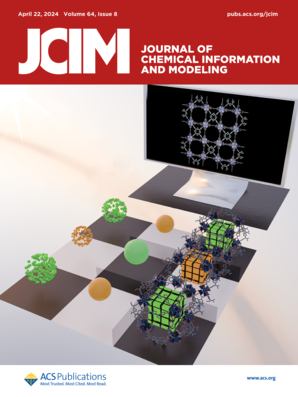结构导向发现新型USP7抑制剂的合理计算工作流。
IF 5.6
2区 化学
Q1 CHEMISTRY, MEDICINAL
引用次数: 0
摘要
合理应用,结构指导计算方法有望识别有效和不同的化学型,同时实现结构决定因素的精确靶向。在这里,我们实施了一个计算工作流程,结合了共晶姿态的见解,并监测了我们之前研究中的动态结构决定因素,以识别USP7的潜在候选药物。我们鉴定并测试了几种不同的化学支架,并在六种癌细胞系中进行了体外验证。其中,化合物M15,属于苯并噻唑类,表现出显著的抗癌活性,在所有细胞系中显示出剂量依赖性的癌细胞活力降低,这表明它是一种有希望被探索的强效抗癌药物。生物物理结合证实了M15与USP7的结合。M15也表现出一定的USP7抑制活性,正如酶分析所观察到的那样。对已报道的USP7抑制剂的比较共晶挖掘揭示了M15的独特结合模式,这很好地交叉证实了MD和结合位姿元动力学模拟。值得注意的是,M15同时占据决定因子,即BL1和变构检查点,后者尚未被强调为可药物位点。从本质上讲,我们的研究提出了一种强大的、多方面的计算方法,用于发现和表征一种新的抑制剂支架,例如M15对USP7的鉴定和机制阐明。这种综合方法不仅促进了我们对USP7抑制的理解,强调了机制决定因素,而且为发现靶向性治疗干预提供了有希望的途径。本文章由计算机程序翻译,如有差异,请以英文原文为准。
Rational Computational Workflow for Structure-Guided Discovery of a Novel USP7 Inhibitor.
Rationally applied, structurally guided computational methods hold the promise of identifying potent and distinct chemotypes while enabling the precise targeting of structural determinants. Here, we implemented a computational workflow combining insights from cocrystal poses and monitoring the dynamical structural determinants from our previous studies for the identification of potential candidates against USP7. We identified and tested several diverse chemical scaffolds, which underwent in vitro validation across six cancer cell lines. Among these hits, compound M15, belonging to the benzothiazole chemical class, exhibited remarkable anticancer activities, demonstrating dose-dependent reduction in cancer cell viability across all cell lines and indicating that it is a promising candidate to explore as a potent anticancer drug. Biophysical binding confirms binding of M15 on USP7. M15 also exhibited certain USP7 inhibitory activity, as observed in the enzymatic assay. A comparative cocrystal mining of reported USP7 inhibitors unveiled a distinct binding mode of M15, which nicely cross-corroborated with MD and binding-pose metadynamics simulations. Notably, M15 occupies both the determinants, i.e., BL1 and the allosteric checkpoint, which has not yet been underscored as a druggable site. In essence, our study presents a robust and multifaceted computational method for the discovery and characterization of a novel inhibitor scaffold, exemplified by the identification and mechanistic elucidation of M15 against USP7. This integrated approach not only advances our understanding of USP7 inhibition and underscores mechanistic determinants but also offers promising avenues for the discovery of target-specific therapeutic intervention.
求助全文
通过发布文献求助,成功后即可免费获取论文全文。
去求助
来源期刊
CiteScore
9.80
自引率
10.70%
发文量
529
审稿时长
1.4 months
期刊介绍:
The Journal of Chemical Information and Modeling publishes papers reporting new methodology and/or important applications in the fields of chemical informatics and molecular modeling. Specific topics include the representation and computer-based searching of chemical databases, molecular modeling, computer-aided molecular design of new materials, catalysts, or ligands, development of new computational methods or efficient algorithms for chemical software, and biopharmaceutical chemistry including analyses of biological activity and other issues related to drug discovery.
Astute chemists, computer scientists, and information specialists look to this monthly’s insightful research studies, programming innovations, and software reviews to keep current with advances in this integral, multidisciplinary field.
As a subscriber you’ll stay abreast of database search systems, use of graph theory in chemical problems, substructure search systems, pattern recognition and clustering, analysis of chemical and physical data, molecular modeling, graphics and natural language interfaces, bibliometric and citation analysis, and synthesis design and reactions databases.

 求助内容:
求助内容: 应助结果提醒方式:
应助结果提醒方式:


